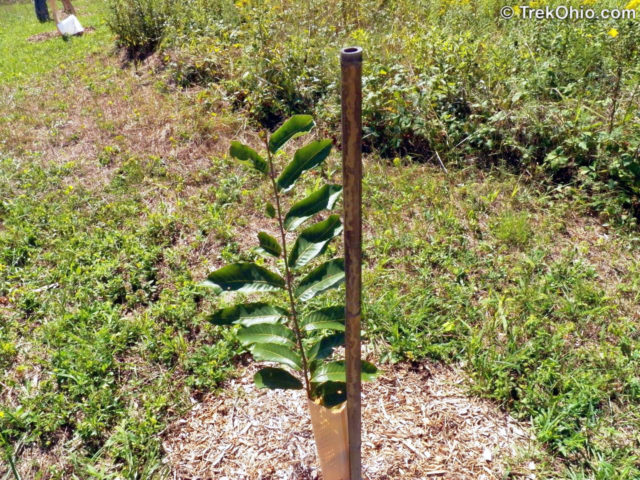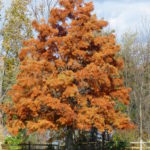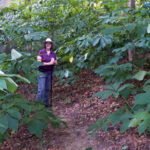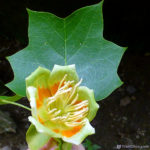Over a hundred years ago, the American chestnut tree (Castanea dentata) was virtually wiped out. Now the Ohio Department of Natural Resources is working on returning this grand tree to Ohio forests.

A long time ago (over 100 years) not far away, giants ruled the Ohio forest. The American chestnut tree grew to heights of 100 to 150 feet. The tree dominated eastern forests from Maine to Georgia. Then one day in 1904, its nemesis arrived from Asia – a fungus by the name of endothia parasitica or chestnut blight. It first appeared in New York City on a few chestnut trees. It spread quickly, and by 1940 had wiped out billions of trees, virtually eradicating the American chestnut.
The End
Except it wasn’t. A few small stands of isolated chestnut trees remained here and there in North America. And the American Chestnut tree had an Asian cousin – the Chinese chestnut. The Chinese chestnut (castanea mollissima) was a smaller tree growing to 60 or 70 feet, but it was very resistant to the blight.
Researchers located some of the surviving American chestnuts and produced a hybrid with the Chinese chestnut. The hybrid was viable and retained the blight resistance of the Chinese chestnut although it was a smaller tree than the American chestnut. They than crossed the hybrid with surviving American chestnuts repeatedly producing a tree that was mostly American chestnut, but that retained blight resistance.
A few years ago, we visited a site in Ohio run by Arc of Appalachia called the “Garden of Hope”. It contained a small orchard of these hybrid trees obtained from The American Chestnut Foundation (TACF). The trees were just saplings. The TACF is actively pursuing development of the cross-bred hybrid trees and are growing them in orchards in Virginia and West Virginia.

There’s a second approach to restoring the American chestnut. Researchers in New York introduced a gene from wheat to the American chestnut genome that produces blight resistance. They’ve produced a tree that is even more resistant to chestnut blight than the Chinese chestnut. A small orchard of these trees are being studied at the State University of New York (SUNY).
The Ohio Department of Natural Resources (ODNR) recently announced that they will begin planting hybrid American Chestnut trees at three locations in Ohio: the Gorge Overlook area at Mohican State Park, Scioto Trail State Forest and the Waterloo Wildlife Area. They are working with The American Chestnut Foundation which is providing 1,000 seedlings that are hybrid, blight-resistant chestnut trees. The saplings are 94% American chestnut and 6% Chinese chestnut.
ODNR has had prior successes with restoring previously eradicated life forms to Ohio. They’ve successfully restored white-tail deer, Canada geese (perhaps too successfully), and wild turkeys. It will be many, many years, but hopefully the giant of the forest – the American chestnut will return to Ohio.
Additional information
- ODNR Helping Restore American Chestnut Trees to Ohio Landscapes
- The American Chestnut Foundation – founded by Nobel prize winner Norman Borlaug and others to restore the American chestnut
- SUNY’s Blight Resistant American Chestnuts
- TrekOhio: Chestnut Ridge Metropark – includes discussion of the decline of the American chestnut
- Can we save the ash tree too?
More on Trees



For anyone interested in the transgenic tree produced by SUNY-ESF in Syracuse.
http://www.esf.edu/chestnut/resistance.htm
This tree is 99.997% American and only needs the one gene for full blight resistance. The gene allows the tree to quickly break down the acid the fungus produces, making the tree blight resistant without hurting the fungus.
Should we plant /try to grow chestnut trees at home or leave to the experts?
Interesting question. The American Chestnut Foundation (TACF) offers seedlings to some of its members. Many towns still have residential streets named “Chestnut Street”, The chestnuts are gone, but they used to be found in cities and towns, as well as forests. If you decide to plant, be aware its a slowing growing tree that will eventually get quite large.